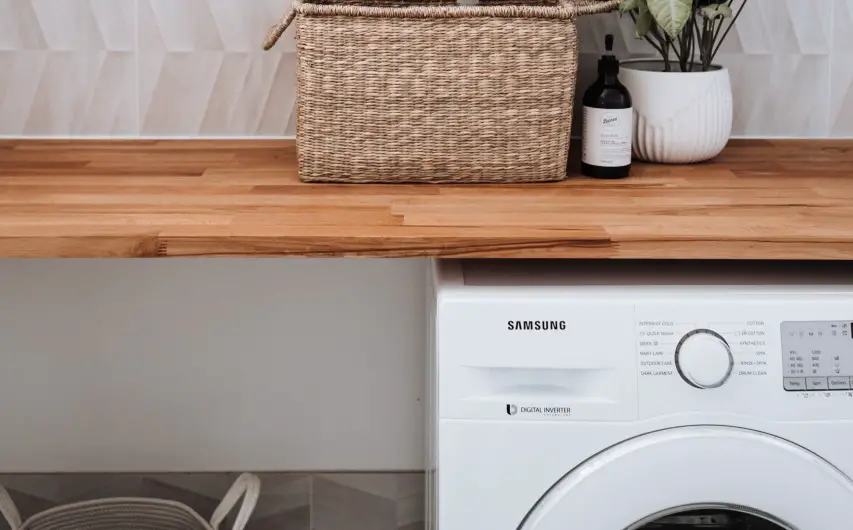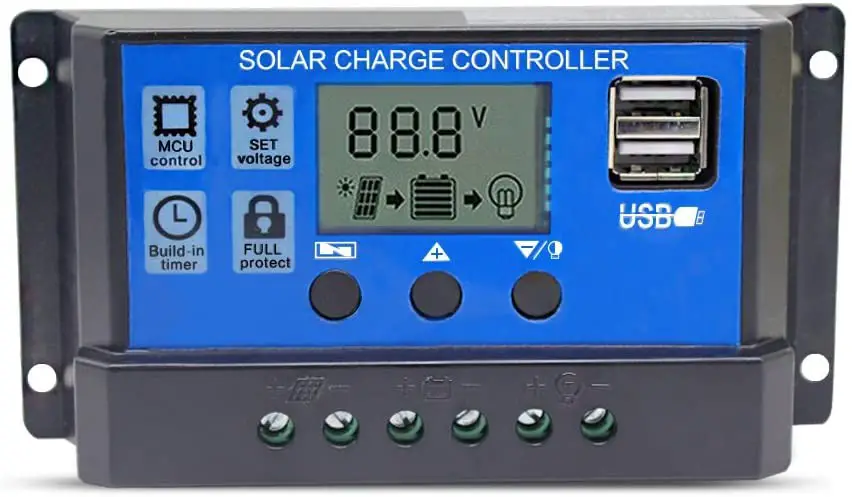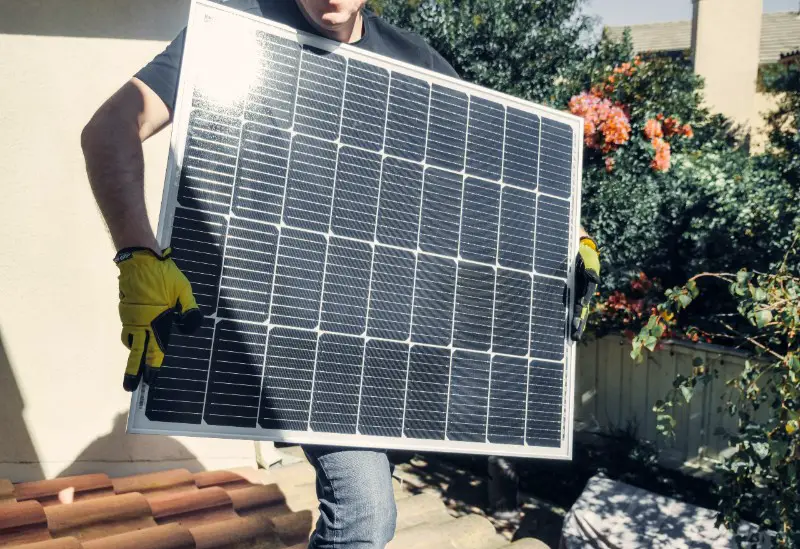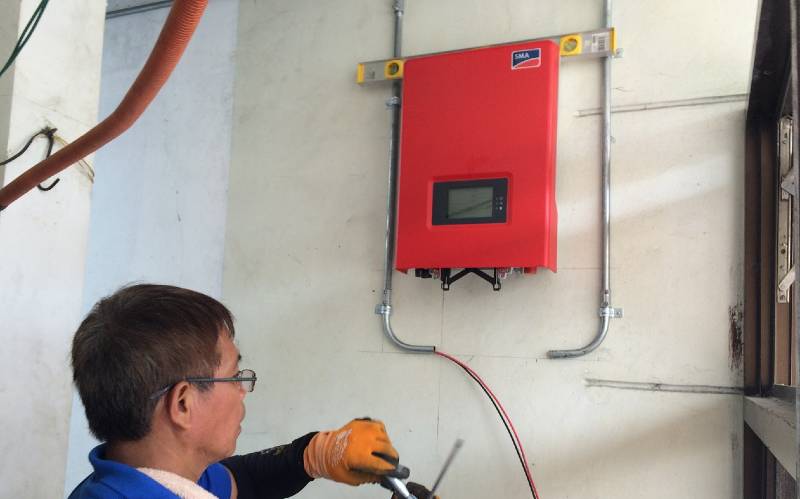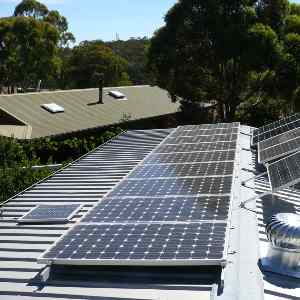When setting up a solar panel system, there’s one thing that often slips under the radar: the weight of the panels.
So, just how big are solar panels?
Well, your typical residential panel is about 65 inches by 39 inches and tips the scales at around 42 pounds.
Commercial panels, on the other hand, are bigger and bulkier up to 50 pounds or more.
In this article, I’ll go through everything you need to know about solar panel sizes and weights.
We’ll look at different types of panels, from residential to commercial, and discuss how their dimensions and weight could impact your installation.
Key Takeaways
- Residential solar panels weigh around 42 pounds (19 kg) and measure about 65 inches by 39 inches, making them suitable for rooftop installations.
- Commercial solar panels weigh around 50 pounds (22.7 kg) or more and measure about 78 inches by 39 inches due to having more solar cells.
- The surface area of a typical residential solar panel is around 17.6 square feet, while commercial panels cover about 21.6 square feet.
- The weight of a solar panel is due to the tempered glass sheet and the aluminum or steel frame, which make them handle extreme weather.
- To ensure your roof can support solar panels, consider the total weight, including mounting hardware, which typically adds up to 3-4 pounds per square foot.
How Much Do Residential Solar Panels Weigh?
Residential solar panels typically weigh around 42 pounds (19 kg).
They usually measure about 65 inches (165 cm) by 39 inches (99 cm) and have a thickness of around 1.4 inches (3.5 cm).
This makes them perfect for rooftop installations—they’re light enough to handle easily but still generate a good amount of power.
To give you a better idea of the variety in solar panel sizes and weights, here’s a quick look based on their power output:
| Solar Panels Wattage | Length (mm) | Width (mm) | Height (mm) | Weight (lbs) |
|---|---|---|---|---|
| 100W | 1195 | 545 | 35 | 19.8 |
| 200W | 1530 | 680 | 35 | 26.5 |
| 250W | 1559 | 798 | 35 | 33 |
| 300W | 1640 | 990 | 35 | 40 |
| 350W | 1956 | 990 | 40 | 44 |
| 370W | 1820.2 | 1106 | 40 | 47 |
| 400W | 2050 | 1050 | 40 | 48.4 |
| 450W | 1903 | 1134 | 40 | 53 |
| 500W | 2073 | 1133 | 40 | 57.3 |
| 550W | 2278 | 1133 | 40 | 62.8 |
Note: These sizes are for average-sized solar panels, but there are also smaller and larger solar panels available on the market.
How Much Do Commercial Solar Panels Weigh?
Commercial solar panels are usually heavier than residential ones, typically weighing around 50 pounds (22.7 kg) or more.
These panels measure about 78 inches (198 cm) by 39 inches (99 cm) and have a thickness of around 1.4 inches (3.5 cm), similar to residential panels.
Like residential panels, commercial panels comprise individual photovoltaic (PV) cells.
However, commercial panels usually have 72 cells instead of 60 in residential panels.
This extra number of cells makes them longer and heavier, allowing them to generate more power, which is great for larger commercial installations.
Here’s a simple comparison to help you understand the difference between residential and commercial solar panels:
| Feature | Residential Panels | Commercial Panels |
| Number of Solar Cells | 60 | 72 |
| Average Length (inches) | 65 | 78 |
| Average Width (inches) | 39 | 39 |
| Average Depth (inches) | 1.5 – 2 | 1.5 – 2 |
| Weight (lbs) | 40 – 50 | 50 or more |
What Is the Surface Area of a Solar Panel?
The surface area of a solar panel is typically around 17.6 square feet for residential panels and 21.6 square feet for commercial panels.
So, how do we figure out these numbers?
Let’s look at residential panels first.
Most of them are about 65 inches long and 39 inches wide.
If you multiply those two numbers (length x width), you get the total in square inches:
Surface Area = 65 inches × 39 inches = 2,535 square inches
But square feet are probably more useful for visualizing, right?
There are 144 square inches in a square foot, so just divide by 144:
Surface Area = 2,535 / 144 ≈ 17.6 square feet
Now, onto the commercial panels, which are a bit larger.
They’re typically about 78 inches by 39 inches.
Doing the same math:
Surface Area = 78 inches × 39 inches = 3,042 square inches
And converting that to square feet:
Surface Area = 3,042 / 144 ≈ 21.1 square feet
What Are the Factors That Determine Solar Panel Size?
1. Solar Cell Type
We’ve got 3 main types of solar cells and each one has its own set of perks and considerations that affect the size of the solar panel.
Let’s dive into each type:
- Monocrystalline Cells: These are the high performers of the solar world. Made from a single, pure crystal of silicon, they boast a uniform appearance and excellent efficiency. This means they can convert a lot of sunlight into electricity without taking up too much space. However, all this efficiency comes at a cost—they are the most expensive to produce.
- Polycrystalline Cells: These cells are a bit like the budget-friendly cousin to monocrystalline cells. They’re also made from silicon, but instead of one pure crystal, they are composed of multiple, smaller crystals. This makes them less efficient and they have a grainier, bluish appearance. To get the same amount of power as monocrystalline panels, you’ll need a larger area covered with polycrystalline panels, but they do cost less.
- Thin Film Cells: Stepping away from silicon crystals, thin film cells are made by layering photovoltaic materials on a substrate. This category includes materials like amorphous silicon, cadmium telluride, and CIGS. They are the least efficient, which means they need a lot more space to produce a comparable amount of electricity. However, they’re the cheapest to manufacture and can be flexible, making them versatile for different surfaces.
2. Solar Cell Efficiency
A solar panel with high efficiency converts more of the sunlight it receives into electricity compared to one with lower efficiency.
Let’s use some numbers to illustrate this: If a solar panel receives 1,000 watts of sunlight and converts 230 watts into electricity, its efficiency is 23%.
This percentage tells us how good the panel is at converting sunlight to electricity.
The higher the percentage, the better the panel’s performance.
Now, why does this matter for the size of the solar panel?
High-efficiency panels, like those made from monocrystalline silicon, typically have efficiencies between 15%-24%.
Because they convert sunlight so well, they don’t need to be very large to produce a substantial amount of electricity.
It’s like having a smaller but highly skilled basketball team that scores consistently.
In contrast, panels with lower efficiency, such as thin film solar cells with efficiencies between 7%-18%, need more surface area to generate the same amount of electricity.
3. Number of Cells in the Solar Panel (Solar Panel Wattage)
The size of a solar panel is closely tied to how powerful it is, which we measure in watts.
This wattage rating gives you a clear idea of how much electricity the panel can crank out under perfect conditions.
Solar panels are available in a whole range of power outputs, from tiny 10-watt panels to hefty ones that exceed 400 watts.
The number of watts a panel can produce is directly linked to the number of solar cells it has and how these cells are laid out.
For instance, typical residential solar panels are equipped with anywhere from 48 to 60 solar cells.
Meanwhile, commercial panels, which need to pump out more power, can pack up to 72 cells.
Sometimes, these cells are even split into halves or thirds, a trick that boosts the panel’s efficiency and allows more cells to fit into the panel.
4. The Solar Panel’s Brand
The brand of a solar panel can greatly influence its design and performance, including its weight.
For example, most standard 60-cell residential solar panels weigh around 42 pounds, but this can vary between brands.
Here’s a quick look at the weights of panels from some popular manufacturers:
| Solar Panel Manufacturer | Solar Panel Weight (60-cell Residential Panels) |
| SolarWorld | 40 – 47 lbs |
| LG | 38 lbs |
| Canadian Solar | 40 – 51 lbs |
| Hyundai | 38 – 41 lbs |
| Hanwha SolarOne | 40 – 42 lbs |
| Hanwha Q CELLS | 41 lbs |
| Trina | 41 – 50 lbs |
| SunPower | 33 – 41 lbs |
| Axitec | 39 – 41 lbs |
| Kyocera | 42 – 44 lbs |
What Makes Solar Panels So Heavy?
Surprisingly, the solar cells in a panel only make up about 5% of its total weight, which is roughly 2.1 pounds or 1 kg.
So, where does the rest of the weight come from?
The heaviest part of a solar panel is the tempered glass sheet, which makes up about 76% of the panel’s weight.
This glass is crucial because it protects the delicate solar cells underneath.
It needs to be super strong to handle extreme weather conditions like high winds up to 140 miles per hour.
It also has to withstand hail up to 1 inch in diameter falling at 50 miles per hour and heavy snow loads up to 5,400 pascals or 112 pounds per square inch.
So, with such demanding requirements, it’s no wonder the glass is heavy.
Another component that adds to the weight is the aluminum or steel frame, making up about 8% of the panel’s weight.
This frame has to be sturdy to hold the panel together and keep it secure in all kinds of weather.
How to Ensure that My Roof Can Support Solar Panel Installation?
To ensure your roof can support solar panel installation, you need first to get a handle on the weight of the system and check the condition of your roof.
Let’s start with the basics.
Say you have a typical 6-kilowatt solar system with 20 panels.
The panels alone will weigh around 800 pounds (that’s 20 panels at 40 pounds each).
Spread out over the system’s area of 352 square feet, this averages to about 2.3 pounds per square foot.
When you add the mounting hardware and other equipment, the total weight per square foot goes up to around 3-4 pounds.
Now, most modern roofs are built sturdy enough to handle more than 3 pounds per square foot.
Interestingly, building codes in the USA and many other countries require roofs to be able to support at least 20 pounds per square foot due to snow loads.
This is far above what solar panels add.
So, of course, your roof should be able to support the weight of 5 stacked solar panels before it even comes close to this limit.
Thus, if your roof is in good shape, you should be good to go for installing solar panels.
But if there’s any concern about the roof’s ability to bear the load, particularly if it’s old or damaged, you might need to consider other installation options.
As part of any solar installation, there’s usually a site assessment where an installer checks out your home to make sure your roof is up to the task.
If it turns out your roof isn’t suitable, don’t worry—you’re not out of options.
You could consider a ground-mounted system or even a solar pergola instead.
FAQs
How Much Does a Solar Panel Weigh in Kg?
A typical residential solar panel weighs around 19 kg. This weight can vary slightly depending on the brand and type.
How Much Does a 500-Watt Solar Panel Weigh?
A 500-watt solar panel generally weighs about 26 kg (57.3 Ibs). The exact weight may differ based on the manufacturer and design.
Will My Roof Take the Weight of Solar Panels?
Your roof will take the weight of solar panels, which is about 3-4 pounds per square foot.
How Heavy Are Solar Panels in the UK?
In the UK, residential solar panels weigh between 18 and 21 kg, while commercial panels weigh between 22 and 30 kg.
Last Words
As promised, we’ve covered the sizes and weights of both residential and commercial solar panels, and we’ve talked about making sure your roof can support them.
Here’s a pro tip: before you buy your solar panels, consult with both a solar installer and a structural engineer.
This way, you’ll know your roof can handle the weight and that your system will be efficient and last a long time.
If you have any questions, drop a comment below. We’d love to hear from you and help out!

